Analyzing Glasshouse Architecture in Dubai's Market
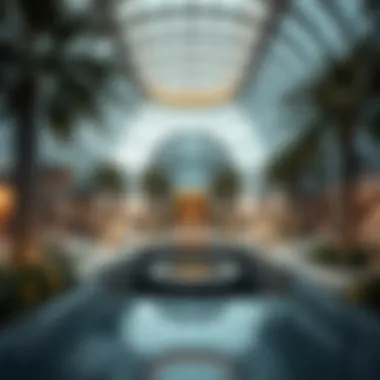
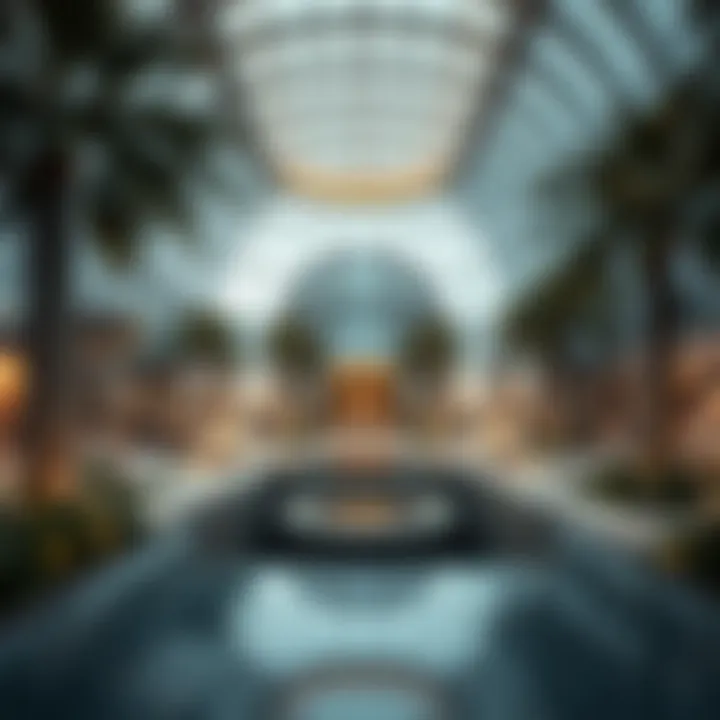
Intro
The architectural landscape of Dubai has taken a turn towards innovation and sustainability, especially with the rise of glasshouses. These striking structures not only push the boundaries of design but also reflect the aspirations of a city that blends tradition with modernity. As the real estate market evolves, understanding the nuances of the glasshouse concept becomes essential for anyone looking to invest or engage deeply with Dubai's property sector.
In this article, we'll navigate through critical aspects of glasshouses in Dubai, highlighting their architectural significance, design trends, sustainability challenges, and investment potential. By dissecting the current market realities and predictions, we aim to provide investors, real estate professionals, and enthusiasts with a comprehensive understanding of this intriguing facet of Dubai's real estate market.
Market Trends
Understanding market trends is crucial when navigating the vibrant real estate scene in Dubai. The glasshouse concept has surfaced as not only a trend but a transformational element in how properties are designed and perceived.
Current Market Analysis
Recently, the demand for properties that emphasize transparency and connection to nature has surged. Glasshouses are often seen in upscale neighborhoods like Emirate Hills and Jumeirah Beach Residence, offering sweeping views and a sense of openness that traditional homes can't match.
Investors are particularly drawn to these homes for their aesthetic appeal and energy efficiency. Many glasshouses are equipped with advanced green technologies, allowing for reduced energy consumption and promoting sustainable living. According to reports from the Dubai Land Department, sales of these modern-style properties have risen steadily, reflecting a broader desire for innovative living spaces that balance luxury with environmental consciousness.
Future Predictions
Looking ahead, the glasshouse concept is poised to continue gaining traction. Experts predict that, as environmental concerns mount, more developers will integrate biophilic designs that bring the outdoors in. In practical terms, this could mean an increase in the number of glass-roofed homes and communal spaces.
Moreover, innovations in glass technology could lead to improved insulation and climate control, which may mitigate some of the challenges currently associated with glasshouses, such as excessive heat exposure. As people become more eco-conscious, expectations for sustainable materials will reshape construction practices, enhancing the overall appeal of glasshouses in the future.
"As cities evolve, the need for transparent, open spaces that foster community is becoming ever more important."
Investment Insights
Investing in glasshouses presents unique opportunities and challenges. Awareness of market dynamics and strategic planning can be beneficial for prospective investors.
Best Areas for Investment
While glasshouses are becoming a trend in various parts of Dubai, certain areas stand out for their investment potential:
- Downtown Dubai: Its proximity to the Burj Khalifa and the Dubai Mall makes it a prime location.
- Dubai Marina: Known for its picturesque views and vibrant lifestyle, it remains a favorite among expatriates and locals alike.
- Palm Jumeirah: The iconic archipelago offers exclusive properties that showcase high-end glasshouse designs, appealing to luxury investors.
Tips for First-Time Investors
For those stepping into the glasshouse investment arena, here are some handy tips:
- Research Thoroughly: Understand market conditions and the specific characteristics of glasshouses. Look into neighborhood trends, potential rental yields, and resale values.
- Consider Sustainability: Seek properties with green certifications or energy-efficient designs, which may attract environmentally conscious buyers.
- Work With Experts: Engage with real estate agents who specialize in contemporary architecture and can provide insights on the viability of your investment.
In summary, the glasshouse concept is more than a design trend; it represents a shift towards sustainability and modern living in Dubai’s dynamic real estate market. By staying informed about market trends and investing wisely, stakeholders can harness the potential this architectural phenomenon offers.
Understanding Glasshouses
In the modern real estate scene, especially in a dynamic market like Dubai's, the idea of glasshouses stands as a testament to the merging of innovative design with functionality. Understanding their concept isn't just about appreciating aesthetics; it dives into how these structures can transform living spaces, align with environmental needs, and influence the overall market. As high-rise buildings touch the sky in Dubai's skyline, the glasshouse emerges as a low-slung, transparent alternative that invites natural light, blurring the line between inside and out.
This section sets the stage for an in-depth analysis of what makes glasshouses not merely homes but lifestyle choices. The benefits of such designs include:
- Natural Light: Enhancing the mood and ambiance, reducing dependence on artificial lighting.
- Ergonomics: A design that encourages a seamless flow between spaces, making living more pleasant and functional.
- Environmental Integration: Fostering a connection with nature in a city that's rapidly urbanizing.
Understanding these key characteristics sheds light on why glasshouses are significant in today's housing discussions. It also informs potential buyers and investors about the real value proposition of these dwellings; not just in terms of investment or property value, but in enhancing quality of life.
Definition and Characteristics
A glasshouse, in essence, is a structure where glass plays a primary role in its construction and design. This could mean walls, ceilings, or entire façades made predominantly of glass. The defining characteristics often include:
- Transparency: The use of glass allows for visibility and shapes an open-air feel in an otherwise closed environment. This fosters a sense of freedom and connection to the outdoors.
- Minimalism: Architectural designs typically lean toward a minimalist aesthetic, showcasing sleek lines and fewer materials, yielding a sophisticated look.
- Use of Smart Glass: Many modern glasshouses utilize advanced technologies, including smart glass that adapts to light and temperature, increasing energy efficiency without compromising comfort.
It's more than just how they look; it's also about how practical they can be. While the aesthetic appeal is undeniable, these homes must also be functional and energy-efficient in a climate like Dubai’s, where temperatures can dramatically soar.
Historical Context
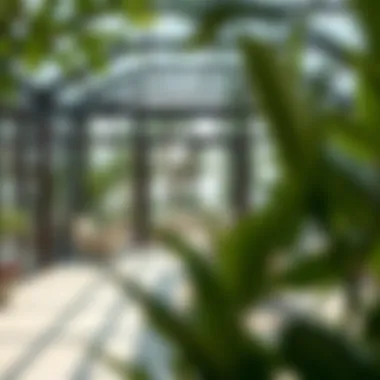
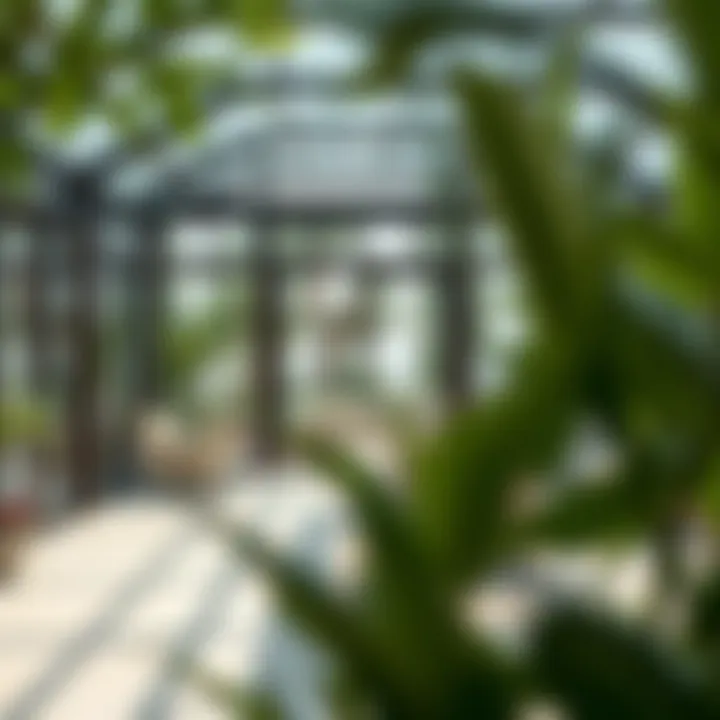
While the concept of glasshouses may seem contemporary, it has historical roots that date back centuries. With origins in the Victorian era, greenhouses were initially developed for botanical studies, allowing for the growth of tropical plants in cooler climates. Over time, this idea morphed into designs that prioritized glass for residential homes.
In specific regional contexts, like Dubai, the shift came about in the early 21st century as luxury real estate began embracing modernist aesthetics and sustainable architecture. With Dubai's vast desert landscape, the minimalist approach of glasshouses provides a sophisticated yet functional answer to living harmoniously within one’s environment. Bringing in elements from the region’s rich architectural heritage, these glass structures playfully contradict the traditional grandiosity often associated with Middle Eastern design.
In today’s context, the blend of classic ideas with contemporary needs illustrates how glasshouses can provide both comfort and style. They reflect our evolving lifestyles and preferences, serving as a bridge between our built environments and the natural world.
Architectural Significance of Glasshouses
The architectural significance of glasshouses cannot be understated, especially in a vibrant urban environment like Dubai. These structures blend functionality with aesthetic appeal and reflect the contemporary architectural ethos. Designed primarily to maximize natural light, glasshouses symbolize a shift towards transparency in living and working environments. This transparency fosters an enhanced connection between the indoor spaces and the ever-changing Dubai skyline.
Design Aesthetics
When we think of glasshouses, it’s easy to get lost in the shiny exteriors that catch the eye. Yet, the design aesthetics go far beyond mere looks. These homes are not just about being visually appealing; they bring a certain harmony to their surroundings. The sleek lines of glass walls often contrast beautifully with the textured materials typically found in the desert landscape. An individual glasshouse not only stands out but complements the overall architectural narrative of the area, offering a modern silhouette against older, more conventional structures.
Key elements contributing to the design aesthetics of glasshouses include:
- Transparency: Eases natural light use and creates a sense of openness.
- Eco-friendly materials: Increasingly used to achieve a balance between sustainability and luxury.
- Minimalist design: Streamlined forms promote simplicity and tranquility.
Notably, some architects incorporate smart glass technology that adjusts opacity based on sunlight. Such advancements aid in tempering light and heat while ensuring the design remains striking. In essence, the aesthetics of glasshouses extend beyond visual pleasure to embody principles of sustainability and contemporary design.
Integration with Surroundings
A glasshouse should not exist in isolation; instead, it ought to engage with its environment meaningfully. In the context of Dubai's diverse landscapes, integrating glasshouses into their surroundings involves careful planning and thoughtful architecture. The buildings may adopt local materials and styles, ensuring that while they contribute to the overall skyline, they also create synergy with existing structures.
There are several ways glasshouses can integrate seamlessly into their settings:
- Landscaping: Thoughtful positioning among trees or gardens can enhance both privacy and beauty.
- Color palette: Matching the local tones, such as soft earth hues, can create visual continuity.
- Building orientation: Correctly positioning the house to capture views without sacrificing comfort is crucial.
As urbanization continues to progress, the way glasshouses are designed and placed can influence urban landscapes profoundly. They create a bridge between nature and the urban experience, enhancing overall living conditions for residents while remaining environmentally accountable.
The Role of Glasshouses in Dubai
In the rapidly advancing real estate scenario of Dubai, glasshouses have carved out a unique niche, representing not just an architectural statement but also a reflection of shifting urban values. These structures are more than mere dwellings; they embody a lifestyle that resonates deeply within the cultural fabric of the city. As residents and investors alike lean towards eco-friendliness and aesthetic beauty, glasshouses present a compelling option that aligns with the desires of a modern-day populace.
Urban Development Trends
Dubai's skyline has undergone a transformative journey, evolving from a collection of modest structures to a world-renowned hub where creativity knows no bounds. The incorporation of glasshouses has been a significant aspect of this transformation.
- Green Spaces Integration: With an increasing emphasis on sustainable living, urban planners are now weaving green spaces into their designs. Glasshouses fit seamlessly into these plans, allowing for natural light to fill interiors while maintaining the harmony of surrounding lush landscapes.
- Mix-use Developments: There’s a noticeable shift toward mixed-use developments. Glasshouses lend themselves beautifully to such designs, offering commercial and residential spaces in a single structure. This not only fosters community engagement but also enhances pedestrian-friendly environments.
- Smart Technology: Recent trends show an emerging preference for smart homes. Glasshouses are being integrated with cutting-edge technology, allowing for enhanced energy efficiency and automation, which greatly appeals to tech-savvy investors and homeowners.
These trends indicate a broader acceptance of glasshouses as a viable alternative in urban development. By maximizing space utilization and creating aesthetically pleasing environments, these structures enhance Dubai's real estate offerings while aligning with global sustainability objectives.
Cultural Influence
The appeal of glasshouses in Dubai extends far beyond architectural novelty; it resonates with the multicultural essence of the city. As Dubai attracts expatriates from all corners of the globe, the architectural choices reflect the desires and lifestyles of diverse populations.
- Symbol of Openness: In a city that prides itself on its global outlook, glasshouses symbolize transparency and openness. The vast use of glass creates an inviting atmosphere, blurring the line between the interior and exterior, and enabling the enjoyment of Dubai's stunning vistas.
- Artistic Expression: Many local designers and artists are now turning to glass as a medium for their work. This has resulted in glasshouses being not just homes, but canvases that reflect the personal stories and cultural backgrounds of their inhabitants.
- Community Identity: As neighborhoods take pride in their architectural choices, glasshouses have begun to set the tone for new communities. They foster a sense of identity that aligns with the forward-thinking ethos of the city, forming part of Dubai's long-term strategy to cultivate a cohesive urban experience.
As glasshouses continue to gain traction, their influence on Dubai's cultural landscape becomes increasingly evident. In this blend of modernity and tradition, they serve as a testament to Dubai’s commitment to innovation while keeping an eye on its rich heritage.
"Glasshouses not only redefine living spaces but also encapsulate the spirit of a city that stands at the crossroads of tradition and modernity."
Investors and homeowners are consequently drawn to the notion of living in a space that encapsulates both the aesthetics and ideals promoted by Dubai’s evolving identity, offering an attractive proposition in the real estate market.
Advantages of Glasshouse Living
The allure of glasshouses goes well beyond their striking exteriors. One must delve deeper into the myriad benefits these structures offer to understand their growing popularity in the competitive Dubai real estate market. From seamlessly blending indoor and outdoor environments to maximizing natural light, the advantages of glasshouse living are significant for a variety of homeowners, investors, and expatriates looking for unique experiences. Below, we explore two key aspects that underscore these advantages: natural lighting and space usage, as well as thermal efficiency.
Natural Lighting and Space
One of the standout features of glasshouses is their ability to invite abundant natural light into living spaces. The extensive use of glass walls and ceilings creates an open atmosphere, which can transform even the smallest of homes into airy retreats. This connection to natural light carries numerous benefits:
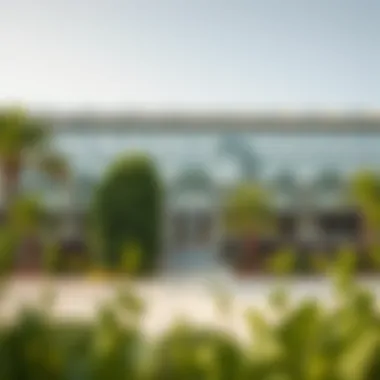
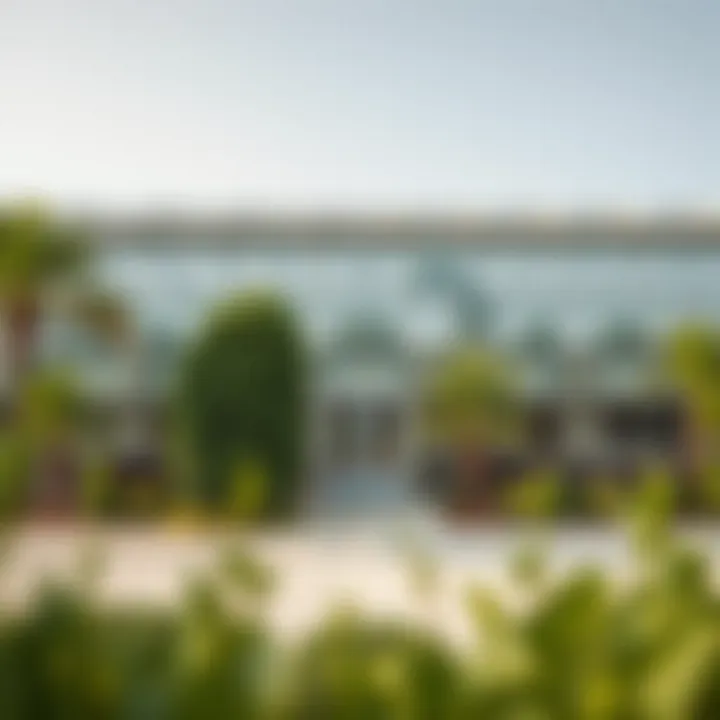
- Mood Enhancement: Studies have suggested that exposure to sunlight can boost our mood and reduce feelings of stress and anxiety. For residents, this means happier living spaces that uplift spirits.
- Energy Efficiency: With an abundance of natural light, the need for artificial lighting decreases significantly during the day. This not only leads to lower electricity bills but also to a reduced carbon footprint, as energy consumption diminishes.
- Visual Expansion: The transparency of glass creates a perception of greater space. In urban environments where square footage can come at a premium, this illusion is invaluable, allowing residents to feel less confined and more connected to their surroundings.
"In glasshouses, it often feels like you have the garden at your fingertips, rather than just through a window."
Thermal Efficiency
Moreover, thermal efficiency in glasshouses is a crucial advantage worth discussing. While one might initially think glass leads to excessive heat loss or gain – and there is some truth to that – modern innovations have addressed these concerns comprehensively. Here’s how:
- High-Performance Glazing: Today’s glass technology includes double or even triple-glazing. These layers trap air between them, creating a thermal barrier that significantly reduces heat transfer.
- Passive Solar Design: Many glasshouses are designed to take advantage of passive solar heating. The sun’s rays directly warm the interior in colder months, while strategically placed overhangs can block direct sunlight during the peak of summer, maintaining a comfortable temperature indoors.
- Smart Home Integration: Increasingly, glasshouses are equipped with smart systems that monitor temperature and humidity levels. This allows homeowners to optimize their living spaces for both comfort and energy efficiency easily.
In summary, the advantages of glasshouse living are not merely aesthetic. They stem from a practical understanding of how design can enhance our quality of life. By taking full advantage of natural light and implementing thermal efficiencies, these homes stand as a testament to modern architectural ingenuity, appealing to a diverse array of interested parties in Dubai's real estate scene.
Challenges Associated with Glasshouses
The concept of glasshouses in real estate, while captivating and innovative, does bring its own set of challenges that need to be thoroughly understood. These challenges can play a significant role in the decision-making process for buyers and investors, shaping not only the day-to-day living experience but also the long-term value and appeal of these unique homes. Understanding these challenges is crucial for anyone considering investing in or residing within a glasshouse, particularly in a dynamic market like Dubai.
Privacy Concerns
One of the most prominent issues associated with glasshouses is privacy. With expansive glass walls and minimal visual barriers, residents can find themselves in a fishbowl-like scenario. This situation can lead to discomfort or insecurity regarding one's personal space. Neighbors or passersby can often see inside, compromising the sense of sanctuary that many homeowners desire.
In densely populated areas, this issue becomes even more pronounced. For investors, it’s essential to recognize that potential buyers may prioritize privacy significantly. Thus, designing glasshouses that incorporate strategic landscaping or architectural features that provide shielding from direct lines of sight can enhance desirability. Ideas to mitigate privacy concerns might include:
- Frosted or tinted glass: This can obscure the view while still allowing light to flood the interior.
- Landscaping: Tall plants or trees can serve as natural barriers, creating a sense of seclusion.
- Vertical gardens: These can be both aesthetically pleasing and practical, offering privacy without compromising natural light.
Ultimately, addressing privacy concerns proactively can increase the marketability of glasshouses, making them appealing options for those looking to invest.
Maintenance Issues
Another hurdle that potential glasshouse owners might face is maintenance. The allure of wide-open spaces filled with natural light can be tempered by the upkeep these structures demand. Regular cleaning is a requisite, as dust and grime can accumulate on glass surfaces, diminishing their aesthetic appeal and efficiency. Considerations for maintenance include:
- Cleaning frequency: Depending on the location and surrounding environment, glass can require more frequent cleaning than standard wall materials.
- Window treatments: Options like interior blinds or exterior shades may need consideration, both for practicality and style, but can also add to overall maintenance tasks.
- Temperature control: Given that glasshouses capture heat during hot days, systems for maintaining temperature can require regular check-ups to ensure optimal performance.
Real estate investors must weigh the long-term maintenance costs against the benefits of owning a glasshouse. If potential buyers aren’t prepared for the upkeep that comes with such designs, it might lead to a decline in property value or induce buyer's remorse.
"Understanding the challenges of glasshouses is just as important as celebrating their benefits. Not addressing key issues can turn potential dream homes into everyday headaches."
Sustainability Considerations
Sustainability stands as a cornerstone in the evolving vision of Dubai's architectural landscape. As glasshouses gain prominence in the real estate market, it is essential to examine their sustainability dimensions. This analytical exploration underscores how glasshouses can align with environmental goals while catering to the luxurious lifestyle that Dubai is known for. Consideration of sustainability not only helps in reducing the carbon footprint but also ensures the long-term viability of these structures, thus appealing to a more conscientious demographic of homebuyers and investors. The shift toward sustainable living is more than a trend; it’s a necessity for the future of urban environments.
Environmental Impact
The environmental impact of glasshouses reverberates through several sectors, primarily energy usage, waste management, and biodiversity enhancement.
- Energy Consumption: Glasshouses often utilize large panels of glass to maximize natural light, which can significantly decrease reliance on artificial lighting. This natural approach leads to reduced electricity usage, a crucial factor in areas with intense sunlight like Dubai. However, the efficacy of this design hinges on appropriate shading solutions to mitigate excessive heat gain, thereby minimizing energy needs for cooling systems.
- Waste Reduction: The construction phase of glasshouses can generate considerable waste. Innovative building practices, such as prefabrication, can minimize waste significantly. Using eco-friendly materials during construction is also imperative. For instance, choosing recycled glass not only reduces waste but also contributes to a circular economy.
- Biodiversity: The integration of nature within and around glasshouses presents opportunities to enhance local biodiversity. Green roofs and vertical gardens can be incorporated into designs, serving as habitats for local wildlife and contributing to urban greening efforts. This symbiosis between architecture and nature fosters a healthier environment and enhances the overall quality of life for residents.
The thoughtful approach to understanding and mitigating the environmental impact of glasshouses marks them as potentially transformative elements in Dubai’s urban scenery.
Innovation in Sustainable Materials
Innovation in sustainable materials emerges as a vital aspect of developing glasshouses that align with Dubai's sustainability goals. Today's advancements allow for an array of options that exhibit both aesthetic appeal and functionality.
- Low-Emission Glass: Specially treated glazing can significantly improve thermal performance, blocking harmful UV rays while maintaining clarity and natural light. This material can drastically reduce heat gain, thus lowering air conditioning costs.
- Recycled and Repurposed Materials: The use of recycled aluminum frames for glasshouses accentuates a commitment to reducing waste. Additionally, by utilizing materials that have been repurposed, builders can decrease the need for new raw materials, which often entail heavy environmental costs in extraction and processing.
- Smart Glass Technology: Some cutting-edge glasshouses incorporate smart glass technology that can adjust transparency based on external light conditions. This innovation minimizes glare while maximizing comfort. Such technology points towards an intelligent integration of modern engineering with sustainable living.
Lastly, the exploration of bio-based materials, such as hempcrete or bamboo, offers further alternatives that blend sustainability with style. These materials not only reduce carbon emissions but also bring a unique aesthetic charm to the often sleek and modern glasshouse design.
In sum, sustainability considerations in the context of glasshouses in Dubai aren’t merely peripheral thoughts—they’re integral to attracting a discerning audience focused on quality, ethics, and the environment. As the market evolves, a commitment to sustainable practices will remain a defining factor in the desirability and valuation of these remarkable structures.
Real Estate Investment Perspectives
The concept of glasshouses in Dubai's real estate market presents a unique investment opportunity, merging aesthetic allure with functional practicality. Savvy investors recognize that these structures carry more than just beautiful design; they embody a lifestyle that appeals to residents and tourists alike. This section unpacks the critical elements influencing the market valuation of glasshouses and examines their future prospects in the context of Dubai's expanding urban landscape.
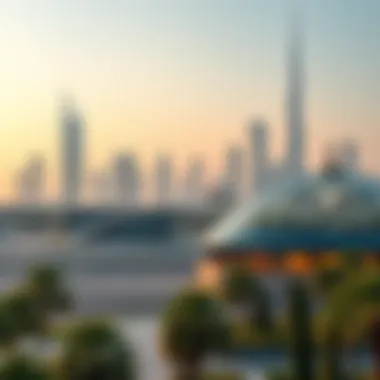
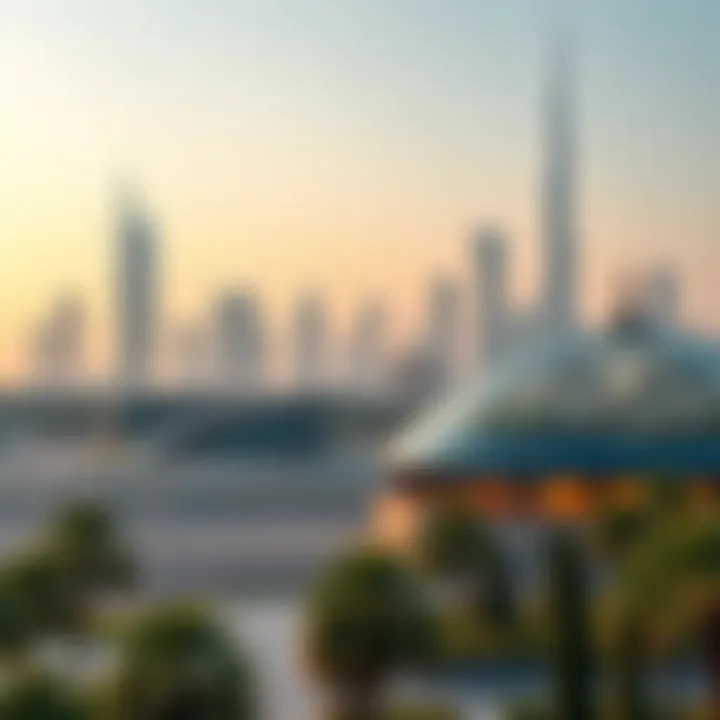
Market Valuation of Glasshouses
Market valuation of glasshouses hinges on several critical factors that differentiate them from more traditional real estate properties. First and foremost, location plays an undeniable role. Properties situated in prime areas, such as Downtown Dubai or the Marina, tend to command a premium price. For instance, a glasshouse here not only offers luxury living but also proximity to upscale amenities, including fine dining and entertainment.
- Design Qualities: The transparency and modern appeal of glasshouses attract a specific clientele. As buyers seek properties that stand out, unique design elements can enhance value.
- Branding and Prestige: Often, renowned architects may be involved in glasshouse designs, thereby elevating their market appeal. A glasshouse designed by a well-known architect might fetch higher prices simply due to the embedded prestige of their name.
- Sustainability Factors: As environmentally conscious living gains traction, glasshouses that incorporate sustainable materials and technologies can see an uptick in valuation. Properties that utilize innovative solar solutions or are designed to maximize natural light not only appeal to buyers but could also lead to potential tax breaks, thus influencing their market price.
Understanding these elements is crucial for potential investors. As real estate continues to evolve, the distinctive qualities of glasshouses will likely enhance their desirability and value.
Future Potential and Demand
As the urban landscape of Dubai continually transforms, the future potential of glasshouses appears bright. The growing inclination toward open, airy living spaces reflects shifting consumer preferences. Here are some factors to consider:
- Urbanization Trends: With Dubai's ongoing efforts to attract expatriates and boost tourism, the demand for distinctive architectural styles, such as glasshouses, is likely to increase. City developers are putting an emphasis on environments that feel expansive and connected to nature, which perfectly aligns with glasshouse designs.
- Cultural Shifts: Societal trends lean toward embracing indoor-outdoor living experiences. This cultural preference for integrating nature into everyday life indicates a potential rise in demand for glasshouse residences that can offer such lifestyles.
- Economic Diversification: As Dubai diversifies its economy beyond oil, the city attracts a broader range of buyers and investors, including those from the technology and financial sectors. Such a diversification may lead to increased interest in luxurious and modern living spaces that reflect sophistication—glasshouses fit this vision perfectly.
"Investing in glasshouses in Dubai isn't merely a financial decision; it’s a chance to be part of a forward-thinking lifestyle and high-value market segment."
Incorporating these various considerations into the investment strategy can yield substantial returns. The dynamism of the Dubai market, coupled with the allure of glasshouses, makes it an exciting frontier for investors looking to make a mark in this evolving landscape.
Interior Design Trends for Glasshouses
The glasshouse, a symbol of openness and connectivity, brings a wealth of possibilities to interior design, especially in Dubai's dynamic real estate market. This section will explore how design trends contribute to the overall experience of living in such structures, focusing on two key areas: creating open spaces and incorporating nature indoors. As we navigate through these elements, it's crucial to appreciate how they not only enhance aesthetics but also promote a lifestyle that resonates with modern living in an urban environment.
Creating Open Spaces
Open spaces have become a hallmark of contemporary interior design, especially in glasshouses. The transparent walls of these structures fundamentally alter the traditional concept of space. Utilizing open layouts fosters a sense of freedom and fluidity. In Dubai, where diverse cultures merge, creating open spaces can reflect social interactions among expatriates and locals alike.
When designing interiors, the choice of furniture plays a significant role. Low-profile pieces work well, encouraging unobstructed views and keeping the environment airy. Instead of heavy draperies, sheer materials can allow natural light to flood the interiors, emphasizing the feeling of openness. Moreover, flexible partitions can help delineate different areas without closing them off completely. This creates an adaptable atmosphere where individuals can easily transition from one activity to another, whether it be a gathering or a moment of solitude.
To sum up, the concept of open spaces in a glasshouse not only enhances the physical environment but also promotes a sense of community, making it particularly suitable for Dubai's rich social tapestry.
Incorporating Nature Indoors
Incorporating nature indoors is more than just a trend; it is a necessity that enhances living in glasshouses. The seamless connection between the indoors and outdoors creates a harmonious environment that fosters well-being. Plants are integral to this approach, offering both aesthetic and psychological benefits. When individuals can see greenery while seated in their living room or dining area, it promotes relaxation and reduces stress.
Several design strategies can be employed to bridge the indoor-outdoor divide effectively:
- Biophilic Design: This idea centers around the inclusion of natural elements in living spaces, integrating textures, colors, and materials inspired by nature. For example, using wood and stone alongside glass can create a more inviting environment.
- Vertical Gardens: If space is tight, incorporating vertical gardens can maximize greenery without crowding floorspaces. These installations not only beautify but also improve air quality within glasshouses.
- Natural Light Utilization: The abundant natural light in glasshouses should be harnessed effectively. Thoughtful placement of mirrors and reflective surfaces can enhance brightness and the feel of spaciousness while showcasing indoor plants more vibrantly.
By thoughtfully incorporating nature indoors, residents can experience a refreshing connection to the outdoors, even while surrounded by the bustling life of Dubai. This trend epitomizes a lifestyle that embraces both luxury and nature, making the glasshouse a true haven in the desert.
"In a city that thrives on innovation and luxury, glasshouses represent a unique blend of style and sustainability, offering a fresh way to experience urban living."
Ultimately, the trends in interior design for glasshouses encourage a modern lifestyle that welcomes natural light and integrates nature, connecting residents not only to their surroundings but also to each other.
Future of Glasshouses in Dubai's Real Estate Market
In an ever-evolving real estate market, the future of glasshouses in Dubai is pivotal not just for aesthetics but also for sustainability and economic viability. The unique nature of these structures, characterized by expansive glass facades and open interiors, presents a remarkable shift from conventional designs. Understanding their future impacts not only helps potential buyers and investors make informed decisions but also aligns with the growing trends in eco-friendly living and lifestyle changes in urban centers.
Technological Advancements
As technology leaps forward at a breakneck pace, glasshouses are now being outfitted with state-of-the-art tools that not only enhance their aesthetic appeal but also their functional efficiency. Advanced glazing technology allows for better thermal performance, reducing energy costs significantly. Smart home features, integrated into glasshouses, can control everything from temperature to lighting through mobile applications.
- Innovations like electrochromic glass can adjust opacity. This means during the scorching Dubai summer, the glass can tint itself to block out excessive sunlight. It’s an elegant way to maintain comfortable indoor environments without cranking up the AC.
- Moreover, sophisticated climate control systems work hand-in-hand with solar panels, creating a self-sustaining living environment. Solar energy harvested through photovoltaic panels can power household systems, making glasshouses more energy-efficient.
With these advancements, glasshouses are not merely homes—they become smart habitats, revolutionizing the idea of sustainable living and attracting tech-savvy investors and homeowners alike.
Evolving Consumer Preferences
The landscape of consumer tastes is changing faster than a cat on a hot tin roof. With millennials and Gen Z entering the real estate market, there's a notable shift towards homes that reflect individuality, sustainability, and functionality. Glasshouses offer a blank canvas for creativity, embodying an openness that allows for personalized designs.
Buyers these days are increasingly inclined to opt for homes that offer connection to the outdoors. The seamless integration of indoor and outdoor spaces can be fulfilled beautifully by glasshouses. This growing preference can be attributed to a folk saying: "A long house can give a short life, but a home gives joy." Buyers are not just looking for shelter; they yearn for a lifestyle that resonates with nature and nurtures their well-being.
With the focus shifting towards eco-friendly living, more people are considering how their homes impact the planet. Thus, glasshouses—known for their sustainable designs—become appealing options in Dubai’s fast-paced property market. As the market adjusts, these homes are likely to create ripples in both desirability and investment potential, setting new trends in luxury living in a desert city.
"Sustainable architecture isn’t just good for the environment; it’s a pivotal element in attracting the modern buyer."
The evolution of glasshouses in Dubai's real estate market indicates not just an architectural trend but a broader societal shift towards embracing new lifestyles—one that values sustainability, advanced technology, and a deep connection with nature.











